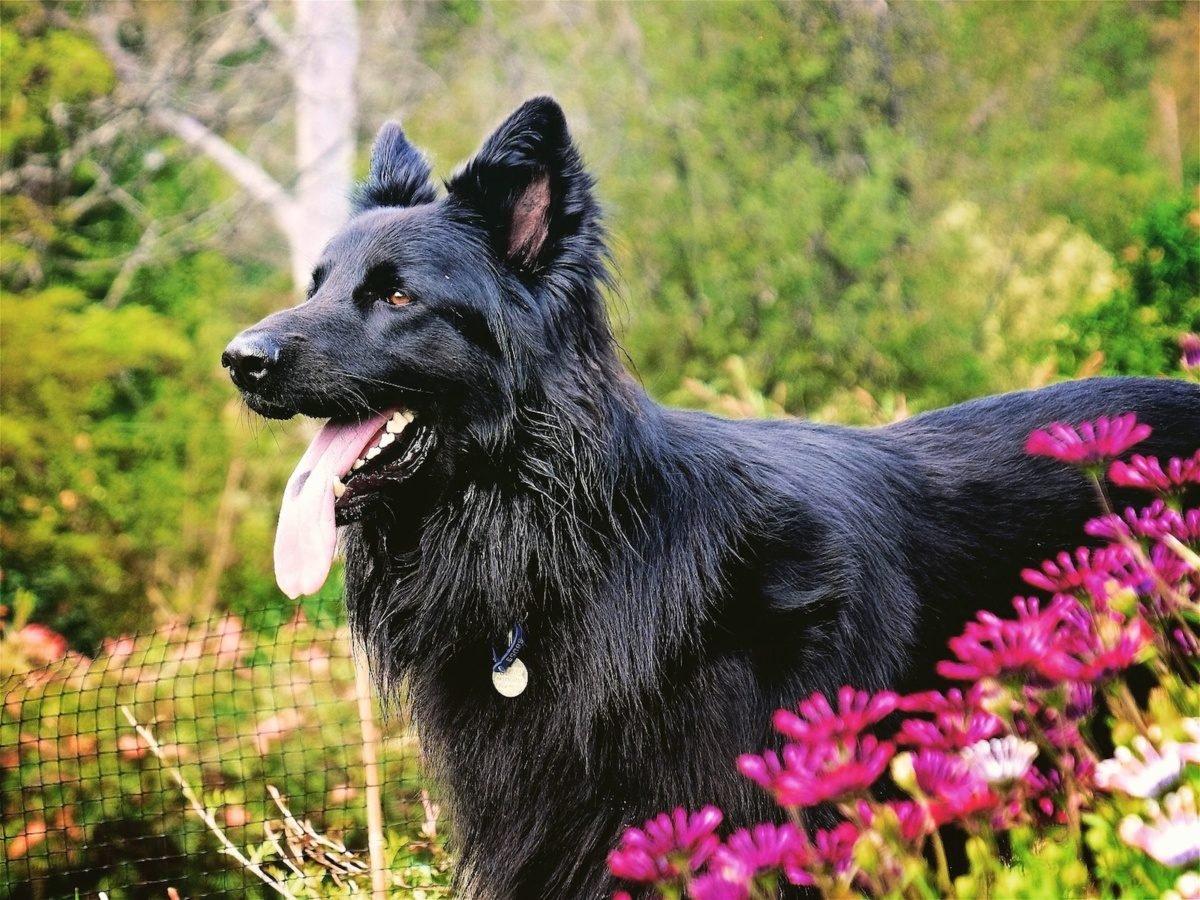A DOGS TONGUE is a radiator, a water-lapper, a healer of wounds, a food conveyor, a register of tastes, a texture sensor, and the wet equivalent of a dog’s handshake. It has more responsibilities than any other part of a dog’s anatomy – excluding the brain. And strangely enough, for all its responsibilities and activities, it is one of the most maintenance free structures of all the dog’s body parts!
Essentially the tongue is an elongated muscular organ with the top surface covered with specialised epithelium. Its responsibilities include responding to taste, touch, pain, and aiding in heat dissipation.
There are eight pairs of muscles whose job it is to control the tongue’s activities. The band of tissue directly under the tongue holding it down is called the frenulum. Just under the tip of the dog’s tongue running from front to back along the midline, is a firm cartilaginous, almost bony structure called a lyssa.
TASTE: the canine tongue is capable of discerning sensations of salt, sweet and sour. The sensation of sour is dispersed somewhat evenly over the top of the tongue, salt along the lateral edges and rear of the tongue and sweet along the edges and front of the tongue. Dogs have a finely tuned ability to taste water, and that trick is performed only by the tip of the tongue.
PAPILLAE: These odd projections from the surface of the tongue are of five different types. The slightly shredded look to the front and side of the dog’s tongue (especially noticeable in newborn pups) are called marginal papillae and those funny bumpy things on the back of the tongue are vallate.
WHAT MAKES THE TONGUE WET? Every dog has four pairs of salivary glands with tiny drainage tubes transporting the saliva into the mouth. One salivary gland is located just beneath and lateral to the eye underneath the ‘cheekbone’. One gland is situated at the base of the ear-canal cartilage; and one just behind the angle of the jaw and the smallest in front of the angle of the jaw. These glands produce the preponderance of moisture in the mouth, secreting a thick (mucoid) saliva and a watery-thin (serous) saliva. Plus, the surface of the tongue itself harbours numerous tiny salivary glands secreting both serous and mucoid fluid. So the dog’s tongue doesn’t really sweat, but the net effect of the salivary glands of the tongue amounts to the same thing – cooling by evaporation.
TONGUE COLOURS: Black pigments (technically a result of microscopic melanin granules) in patches on a dog’s tongue, gums and inner lips are common and have no medical significance. That is as long as the dark patches are not raised up higher than the surrounding non-pigmented tissue.
If you do notice dark, pigmented tissue anywhere on your dog that actually looks like a bump or is raised up above the neighbouring tissue, have your veterinarian examine it. It may be a dangerous form of cancer called melanoma. Another nasty form of cancer accounting for about half of all types found in the tongue is called squamous cell carcinoma. Two other types of cancer of the tongue are granular cell tumor and mast cell tumor. If found early, these may be treatable and complete cures are possible, however, plan on surgery and possible radiation therapy.
INFECTIONS: Because it is so richly supplied by nourishing blood vessels, infections of the tongue are not common. Generally, when they do occur, a foreign body such as thorn or wood splinter is the culprit and can be removed under anesthesia.
WIRING: The canine tongue is uniquely constructed to do so many things. And to perform all these diverse and intricate functions the tongue requires five separate pairs of nerves coming directly from the brain through tiny openings in the dog’s skull. These are called Cranial Nerves since they do not arise from the spinal cord, but directly from the base of the brain itself.
CUTS TO THE TONGUE: A major source of heat loss for an exercising dog, the tongue’s rich supply of blood vessels all dilate, causing the tongue to swell and extend. Even a tiny puncture at this time will cause the tongue to bleed. A deep cut can produce some truly scary amounts of blood. As the dog cools off, the blood vessels constrict turning down the flow to normal and the tongue shrinks back to a resting state, and clotting will naturally occur.
So, if you find yourself with a canine who has cuts his tongue – stop any activity immediately, cool the dog down with a short swim (if possible) and a short drink of cool water. Consider a trip to the vet if your judgment tells you the bleeding is pretty significant, but don’t allow the dog to continue to drinking. All that tongue activity required to lap up the water will only delay the clotting. Plus, if some anesthesia and suturing is required, it is preferable to operate on a patient that has an empty stomach rather than to risk anesthesia-induced vomiting in an unconscious patient.
It’s a good idea to examine your dog’s mouth routinely. Keep a close watch out for ulcers, bruises or bleeding from the tongue, gums or palate. Check for broken teeth that can irritate the tongue or bumps arising anywhere within the oral cavity. Work your finger under each side of the tongue and force it upward so you can inspect the underside of the tongue.

